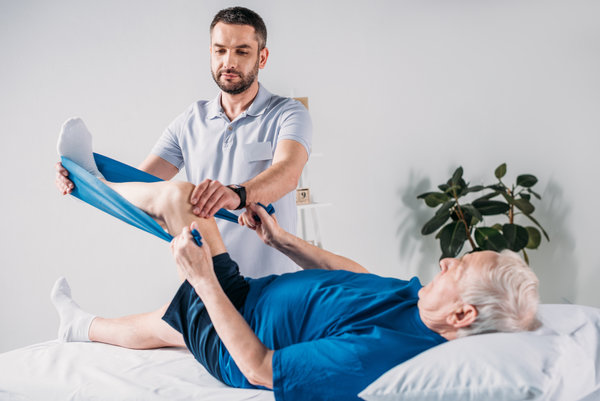 Hip replacement surgery techniques allow for a short and successful recovery for most patients after leaving the operating room, but the return to your day-to-day activities will be gradual. Your recovery will require the assistance of a physical therapist and performing a series of exercises two or three times a day. Let's take a look at the types of exercises to expect after anterior hip replacement and how post-surgery progress is made.
Hip replacement surgery techniques allow for a short and successful recovery for most patients after leaving the operating room, but the return to your day-to-day activities will be gradual. Your recovery will require the assistance of a physical therapist and performing a series of exercises two or three times a day. Let's take a look at the types of exercises to expect after anterior hip replacement and how post-surgery progress is made.
Shortly after your surgery, you will perform a series of early recovery exercises to reestablish a healthy circulation in your limbs. These start with simple movements such as ankle pumps, ankle rotations, knee bends, leg raises and buttock contractions. These movements are easy enough to be performed without standing up from your bed.
Once you can stand up and feel stable enough, you will be ready to start a series of standing exercises. At first, you may need assistance. Do not feel discouraged if you notice your range of movement is reduced. In no time you will be able to stand and perform all exercises independently. These exercises include knee raises, hip extensions and hip abductions completed standing in front of a chair and holding to the backrest for extra support.
Walking, climbing and descending stairs is the next phase of your recovery. Begin this phase by walking with two crutches or a walker. In each step, it is essential to touch the floor with your heel first and flatten your foot afterward. As you walk, do not hurry - take your time. You graduate to using a single crutch or a cane as soon as you can stand and walk for at least 10 minutes. Next step is to start climbing stairs to build up more strength. Begin with having assistance, and it is essential to practice on stairs having a handrail.
Once you've accomplished climbing stairs and are not experiencing balance problems or weakness, you can move on to more advanced movements. In this stage, you will need a resistance band to perform hip flexions, extensions, and abductions while resisting the tension of the resistance band. Do not overdo these exercises. Learn how to read your body and know when to stop.
Once you are walking without any aid, you will be able to use the stationary bicycle to improve your hip mobility and muscular strength. You are considered fully recovered when you can cycle for 15 minutes two times a day and walk for 10 minutes three times a day without feeling weak or tired. Once fully healed, you will be able to perform longer walks and return to your normal day-to-day activities.
For more information on anterior hip replacement or to schedule a consultation with Dr. Dan Albright call 919-863-6808. Learn more about our total hip replacement surgery, that may be better for you.





